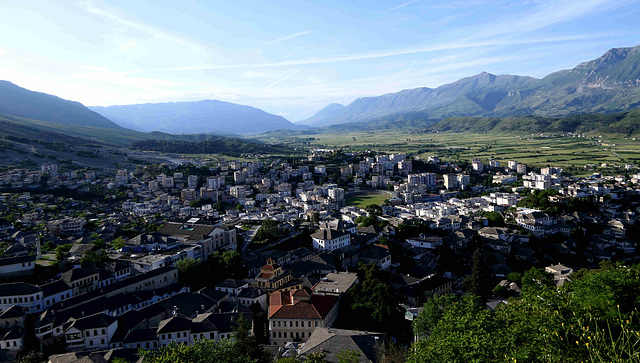Gjirokastër - Orthodox Cathedral
Gjirokastër
Tepelena - Ali Pascha
Tepelena - Vjosë
Berat - Gorica
Berat - Gorica Bridge
Berat - Cathedral of Saint Demetrius
Berat - St. Michael
Berat
Berat
Berat
Berat - King Mosque
Berat - Halveti Tekke
Berat - Berat Castle
Berat - Cathedral of Dormition of St. Mary
Berat - Onufri Iconographic Museum
Berat - Onufri Iconographic Museum
Berat - Onufri Iconographic Museum
Berat - Onufri Iconographic Museum
Berat - Onufri Iconographic Museum
Berat - Onufri Iconographic Museum
Lake Ohrid
Ohrid
Gjirokastër
Gjirokastër
Valare - Nga Shtepia
Valare - Nga Shtepia
Butrint Lagoon
Butrint Lagoon
Butrint
Butrint
Butrint
Butrint
Butrint
Butrint
Butrint
Butrint
Butrint
Butrint
Butrint
Butrint
Butrint
Butrint
Butrint
Sarandë - Kalaja e Lëkurësit
Location
Lat, Lng:
You can copy the above to your favourite mapping app.
Address: unknown
You can copy the above to your favourite mapping app.
Address: unknown
Keywords
Authorizations, license
-
Visible by: Everyone -
All rights reserved
-
32 visits
Gjirokastër


Gjirokastër, today a city with a population of about 20.000, developed on the hill where the castle is located in the Middle Ages. The first fortification dates to the 5th-6th centuries CE during the period of Slavic migrations. It was expanded in the 9th-10th centuries and urban development in the castle area dates to the 13th-14th centuries. During this period, Gjirokastër developed into a center known in medieval sources as Argyrokastron, meaning "Silver Castle". The city was first mentioned by the name Argyrokastro in 1336.
The Albanian Zenebishi clan held Gjirokastër by the end of the century. In this era, the city was contested between the Italian and Serbian rulers. It was taken by the Ottomans in 1418. During the Ottoman period conversions to Islam and an influx of Muslim converts from the surrounding countryside made Gjirokastër go from being an overwhelmingly Christian city in the 16th century into one with a large Muslim population by the early 19th century.
In the 1570s local nobles discussed as Greek representative of enslaved Greece and Albania with the head of the Holy League, John of Austria, the possibility of an anti-Ottoman armed struggle, but this initiative was fruitless.
During the communist regime the city was elevated to the status of a museum town, as it was the birthplace of dictatorial ruler of the People's Socialist Republic of Albania Enver Hoxha.
View from the castle
The Albanian Zenebishi clan held Gjirokastër by the end of the century. In this era, the city was contested between the Italian and Serbian rulers. It was taken by the Ottomans in 1418. During the Ottoman period conversions to Islam and an influx of Muslim converts from the surrounding countryside made Gjirokastër go from being an overwhelmingly Christian city in the 16th century into one with a large Muslim population by the early 19th century.
In the 1570s local nobles discussed as Greek representative of enslaved Greece and Albania with the head of the Holy League, John of Austria, the possibility of an anti-Ottoman armed struggle, but this initiative was fruitless.
During the communist regime the city was elevated to the status of a museum town, as it was the birthplace of dictatorial ruler of the People's Socialist Republic of Albania Enver Hoxha.
View from the castle
Annemarie has particularly liked this photo
- Keyboard shortcuts:
Jump to top
RSS feed- Latest comments - Subscribe to the comment feeds of this photo
- ipernity © 2007-2025
- Help & Contact
|
Club news
|
About ipernity
|
History |
ipernity Club & Prices |
Guide of good conduct
Donate | Group guidelines | Privacy policy | Terms of use | Statutes | In memoria -
Facebook
Twitter

Sign-in to write a comment.